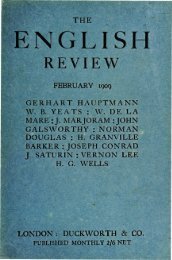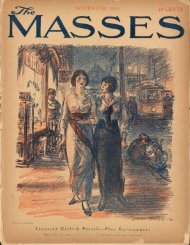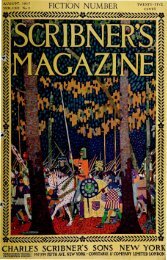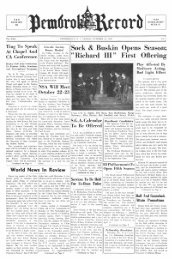View PDF - Brown Library
View PDF - Brown Library
View PDF - Brown Library
You also want an ePaper? Increase the reach of your titles
YUMPU automatically turns print PDFs into web optimized ePapers that Google loves.
192 The Motor in Warfare<br />
British equipment was magnificent. In<br />
addition to its own normal supply of fourton<br />
lorries, of a special War-Office type, it<br />
than in the case of the British, and French<br />
papers have been all but barren of information<br />
throughout the war; but from<br />
sundry stray allusions in the English papers<br />
there is ground for believing that the<br />
French piou-piou has been well fed, and<br />
has fought in good spirits accordingly.<br />
The Germans could tell a different tale.<br />
Their initial motoring equipment was colossal<br />
in itself, but the whole scheme of<br />
supply failed by reason of the frustration<br />
of their scheme of stalking through Belgium<br />
and reaching Paris within a fortnight.<br />
The "quick decisive blow" was<br />
never realized, and, as the comfort of<br />
their "cannon fodder" was the last thing<br />
that Prussian autocrats had thought<br />
about, the German army suffered the<br />
pangs of hunger for days at a time. The<br />
Kaiser himself, however, had a fleet of<br />
From a photograph by "Topical" War Service.<br />
Pegoud, the famous French aviator, in his military<br />
uniform as one of the French Flying Corps.<br />
had commandeered large numbers of fiveton<br />
and three-ton vehicles. The firstnamed<br />
naturally proved the most serviceable,<br />
a number of the hastily acquired<br />
wagons, which had already undergone<br />
heavy commercial use at home, breaking<br />
down from one cause or another in the<br />
first two or three weeks of the war. They<br />
were speedily replaced by newer vehicles,<br />
however, and it may be said at once that<br />
the commissariat has never failed on the<br />
British side, and "Tommy Atkins" has<br />
rarely been without good food in plenty.<br />
That an army "fights on its stomach" is<br />
a well-known military axiom; it was certainly<br />
adequately fulfilled in the case of From a photograph by the Record Press, London.<br />
the British troops, and what particularly Sharpshooters attached to the Belgian Flying Corps.<br />
impressed the French was the self-contained<br />
way in which they moved throughout,<br />
carrying complete supplies and selcluding<br />
a travelling kitchen of special de<br />
fifty cars for his immediate entourage, indom<br />
needing to requisition from the towns sign.<br />
through which they passed.<br />
Not by any means the least interesting<br />
There is no reason for supposing that feature of the "heavy-motor" equipment<br />
the French lines were not equally well of the allied armies is the way in which<br />
served by their motor-lorry trains. Even vehicles designed for peace purposes have<br />
greater secrecy has been observed as to performed invaluable service. The British<br />
commercial wagons already the equipment of General Joffre's army<br />
mentioned










